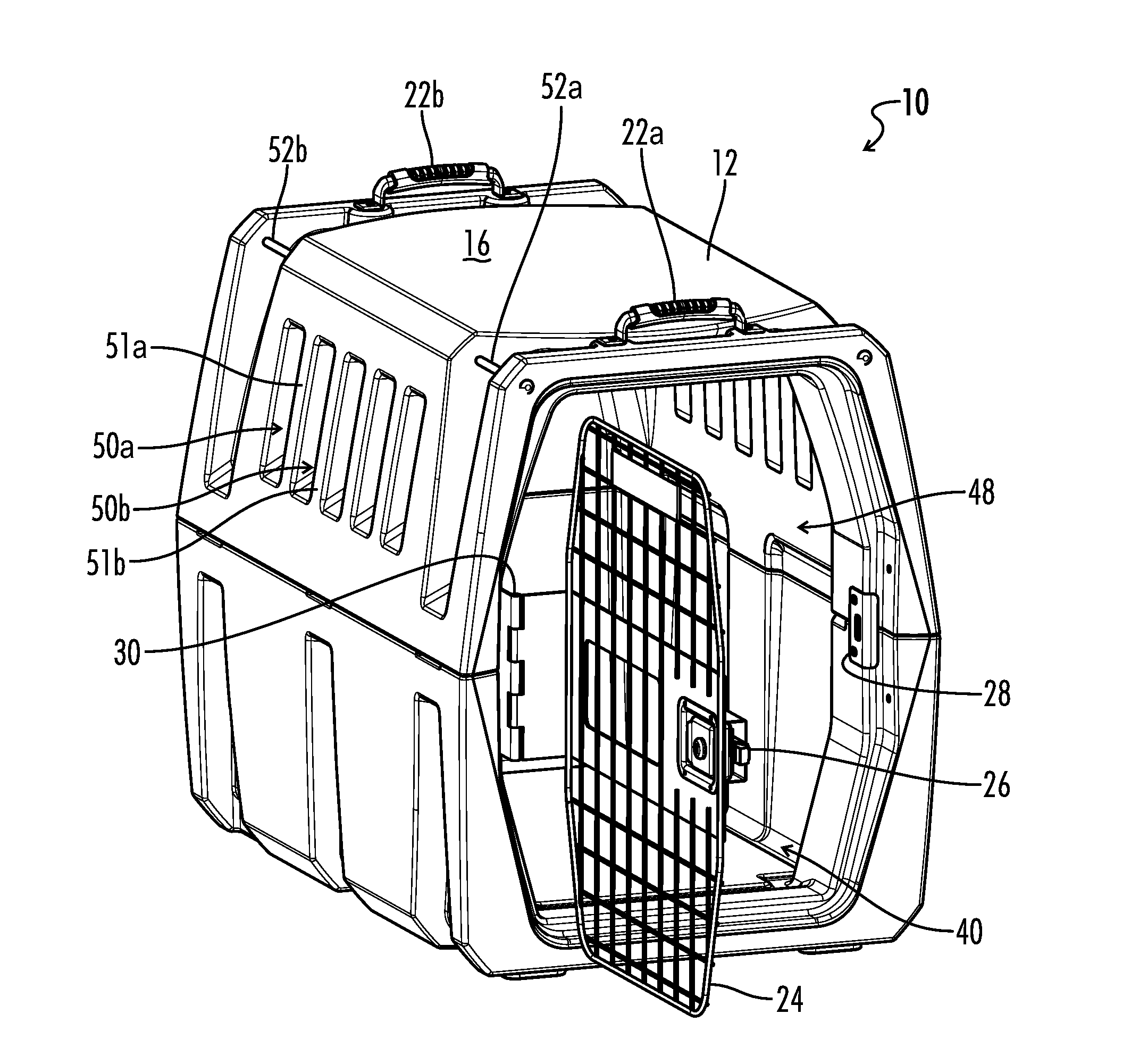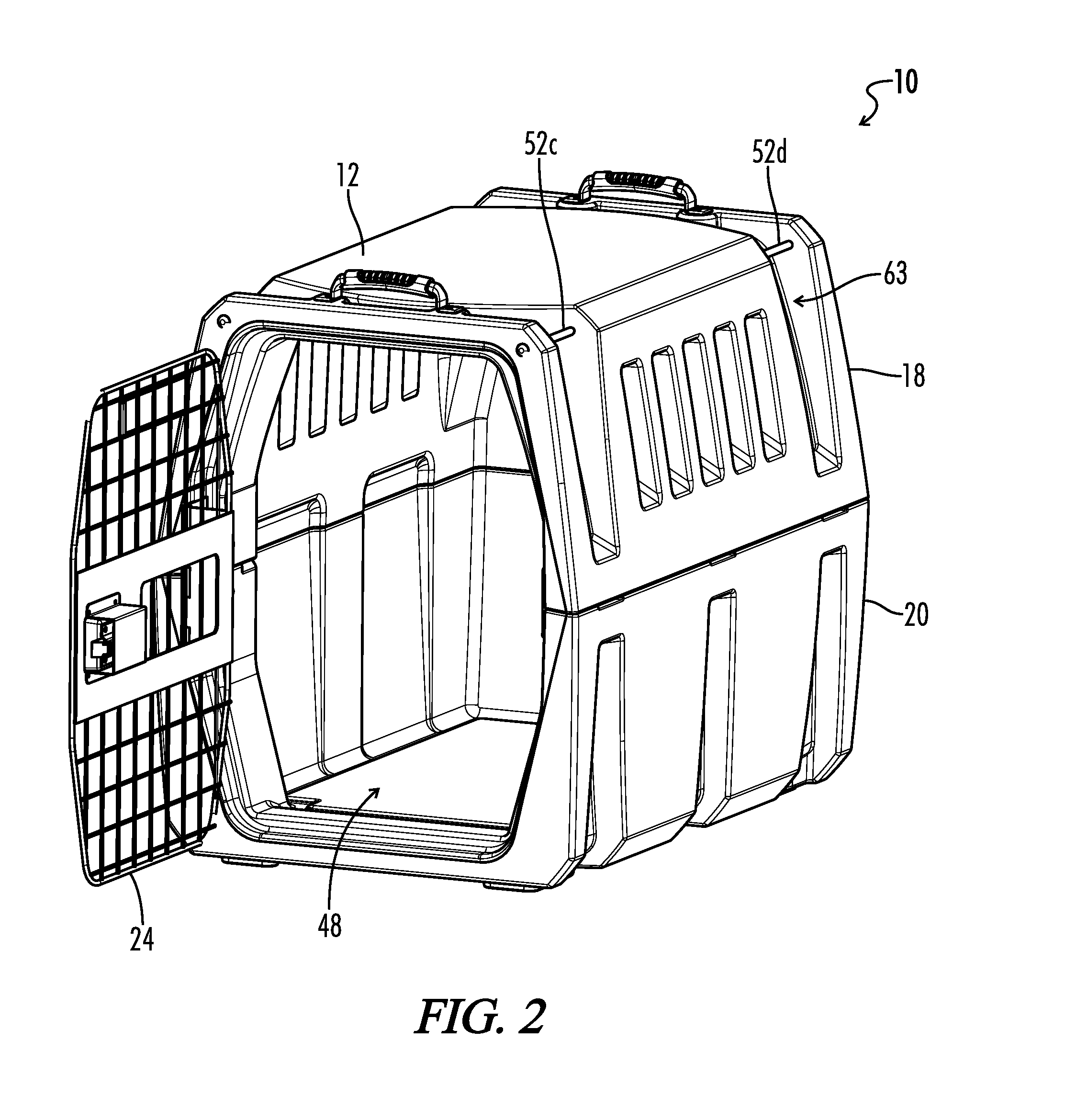Animal enclosure
a technology for animal enclosures and enclosures, which is applied in the field of structures for housing animals, can solve the problems of lack of structural integrity and toughness of construction, damage to the animal housed within the enclosure, cracks or dents in materials, etc., and achieves the effect of improving the thermal insulation of the enclosed space and improving the rigidity and stability of the structur
- Summary
- Abstract
- Description
- Claims
- Application Information
AI Technical Summary
Benefits of technology
Problems solved by technology
Method used
Image
Examples
Embodiment Construction
[0043]Referring now to the drawings, FIG. 1 illustrates an embodiment of an animal crate designated by the numeral 10. Animal crate, animal enclosure, or kennel 10, includes a housing or kennel body 12 defining an interior space shaped and sized to accommodate one or more animals. In some embodiments, kennel body 12 is shaped to accommodate a dog. Kennel 10 is also shaped and sized to be portable in some embodiments. The size and shape of kennel 10 allows kennel 10 to be easily transported from a residence or building to a vehicle or other mode of transportation. Additionally, in some embodiments, kennel 10 is portable and is shaped and sized to comply with one or more regulations for traveling with pets on commercial airlines.
[0044]Kennel 10 includes a door 24 hingedly attached to the kennel body 12. Door 24 includes a metal wire construction to allow airflow through the door into and out of the interior enclosure in some embodiments. Door 24 includes a latch 26 selectively engagea...
PUM
 Login to View More
Login to View More Abstract
Description
Claims
Application Information
 Login to View More
Login to View More - R&D
- Intellectual Property
- Life Sciences
- Materials
- Tech Scout
- Unparalleled Data Quality
- Higher Quality Content
- 60% Fewer Hallucinations
Browse by: Latest US Patents, China's latest patents, Technical Efficacy Thesaurus, Application Domain, Technology Topic, Popular Technical Reports.
© 2025 PatSnap. All rights reserved.Legal|Privacy policy|Modern Slavery Act Transparency Statement|Sitemap|About US| Contact US: help@patsnap.com



